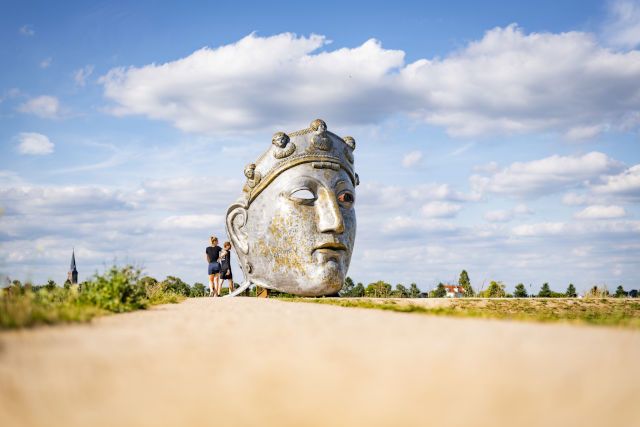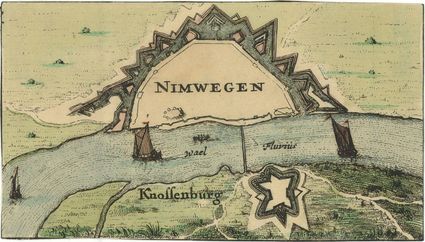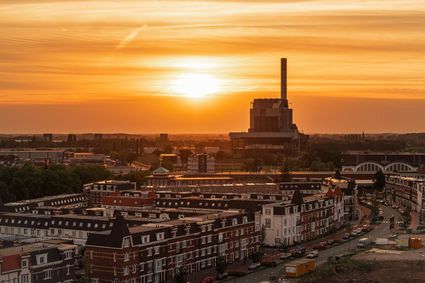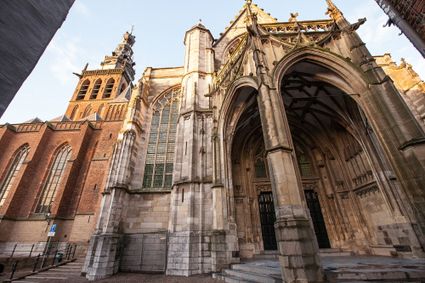The Roman cities Oppidum Batavorum and Ulpia Noviomagus
Nijmegen is bursting at the seams with historical stories, ranging from leading figures to ordinary people, from neighbourhoods to political events. The Canon of Nijmegen encompasses the most important stories about Nijmegen’s history. One of these stories tells the tale of Oppidum Batavorum and Ulpia Noviomagus. Before the calendar era, Nijmegen, where the Romans built the settlement of Oppidum Batavorum, became an important centre in the North of the Roman Empire because of its advantageous location. Around the year 17 A.D., Emperor Tiberius erected a monumental pillar of the gods, the remains of which can be admired in The Valkhof Museum.
17-69 A.D.: Oppidum Batavorum (city for the Batavians)
The city Oppidum Batavorum (city for the Batavians), situated on and around the Kelfkensbos, originally comprised a linear settlement along a road which led to a fortification on the Kops plateau. Deep house plots were built at right angles to the main street, and small alleys provided access to the rear yards. Initially, the houses were built entirely out of wood and loam, including wooden cellars. They rebuilt these houses around 40 A.D., making them larger and giving them tile-covered roofs, as well as plastering the clay walls and painting on them according to the latest fashions. At least one building, located on the current St. Josephhof received a stone foundation, which is the oldest stone foundation in the Netherlands.
Oppidum Batavorum was mostly inhabited by immigrants, who held jobs as government officials, merchants, and craftsmen. Batavians also lived in Oppidum Batavorum, but they’d most likely adopted enough Roman customs that they didn’t distinguish between themselves and their Roman or Gallic neighbours. In 69 A.D., the Batavians revolted against the Romans. After they were defeated by Roman troops at Xanten, the Batavians set fire to Oppidum Batavorum and retreated to the Betuwe. The historian Tacitus described these events in his historical chronicle “Histories.”
 In 2005, a modern sundial was placed on the square in front of the Valkhof Museum. The lower part of this sundial is a copy of a part of the pillar of the gods which stood on that spot two thousand years ago. The original parts of this pillar can be admired in the Valkhof Museum.
In 2005, a modern sundial was placed on the square in front of the Valkhof Museum. The lower part of this sundial is a copy of a part of the pillar of the gods which stood on that spot two thousand years ago. The original parts of this pillar can be admired in the Valkhof Museum.
100 – 270: Ulpia Noviomagus
After the Romans restored peace, they didn’t rebuild the city on the same spot. The men of the Tenth Legion helped build a new city two kilometres to the West of the original location, on the spot where the Waterkwartier in the West of Nijmegen is located currently. Around 100 A.D., Emperor Traianus granted this town city rights as well as the name Ulpia Noviomagus. Large buildings arose, like a forum, a public bathhouse, and several temples. After the middle of the second century, the city was surrounded by a stone defensive wall and a deep moat. These measures were probably constructed because of the unrest that had arisen in the North-western part of the Roman Empire. Shortly after the construction of the wall, a lot of the city burned down and wasn’t rebuilt. Around 270 A.D., the city was finally abandoned and people moved to the centre of Nijmegen. They built a fort on the Valkhof where soldiers and citizens could retreat in times of danger. The Merovingians took over at the middle of the fifth century.
Immerse yourself in the rich history of the oldest city in the Netherlands, because Nijmegen has a lot of stories to tell you. Curious? You can read all about it in this historical timeline.



